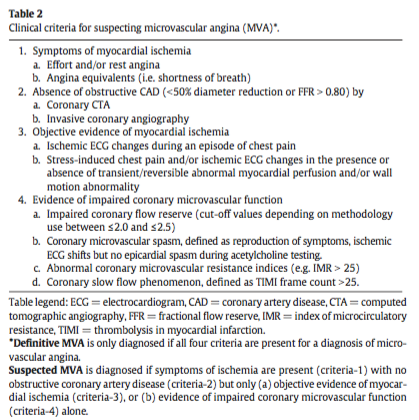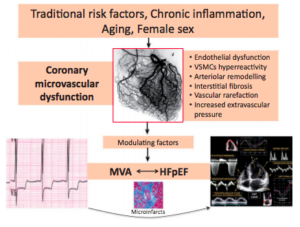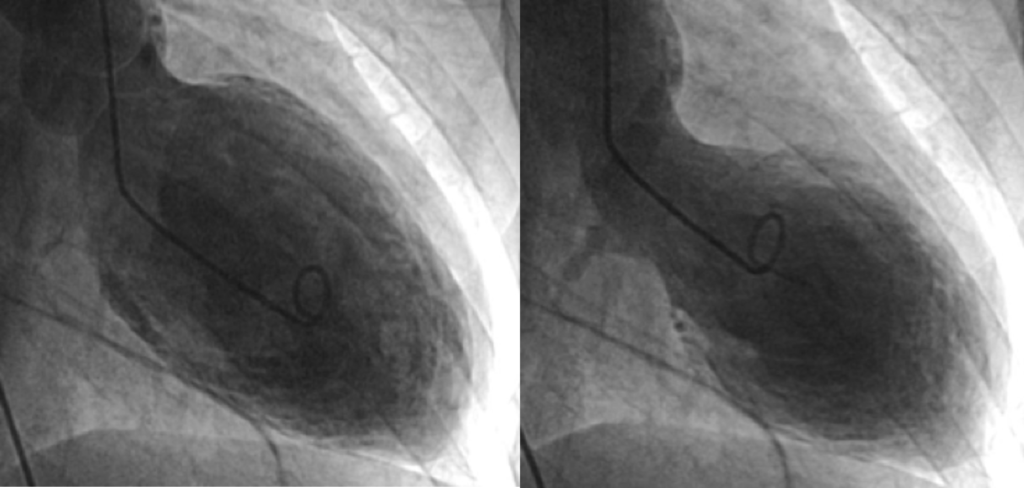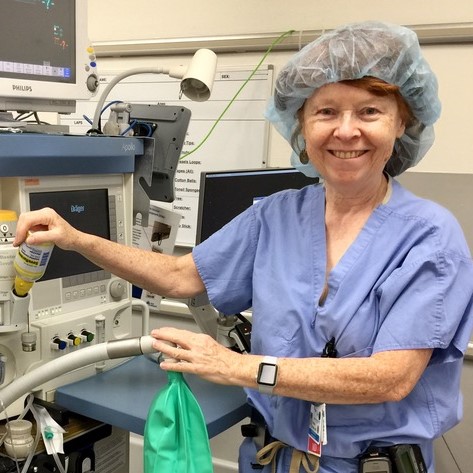
Information From Our Experts
“The pain experienced by patients with microvascular angina can be disabling and as bad or even worse than other types of angina.’‘
Professor Colin Berry
Here you will find information from our esteemed Medical Advisory Board Members and from experts in their fields. You can use the filters below to select particular areas of interest.
Don’t forget to join us on our social media platforms to keep up to date with all the latest information and updates too!
Twitter: @InocaInternati1
Facebook: https://www.facebook.com/groups/491395198372627
Insta: https://www.instagram.com/inoca_international/
TikTok: https://www.tiktok.com/@inoca_international
INOCA (Ischaemia with no obstructed coronary arteries)

Professor Juan-Carlos Kaski
INOCA (Ischaemia with no obstructed coronary arteries) – Changing the angina pectoris paradigm.
Angina pectoris, a concept proposed more than two centuries ago, is almost always considered to be caused by obstructive atherosclerotic epicardial coronary artery disease (CAD), i.e. the CAD paradigm. Current diagnostic and therapeutic strategies aimed at dealing with angina pectoris are also based on the obstructive CAD paradigm. Indeed, recommendations in international angina management guidelines reinforce the notion that coronary atheromatous plaques are the main cause for myocardial ischaemia and the key treatment target. The latest European Society of Cardiology guidelines however, highlight the fact that functional mechanisms such as coronary artery spasm and coronary microvascular dysfunction (CMD) are important in the pathogenesis of myocardial ischaemia. Moreover, they recommend that functional tests are carried out at diagnostic angiography to fully understand the origin of angina symptoms in patients presenting with ischaemic chest pain without obstructive CAD (INOCA). Whilst recognition, diagnosis and treatment of traditional forms of angina triggered by CAD have advanced rapidly over the past decades, the recognition, diagnosis and treatment for INOCA have not. INOCA has been shown to be a common condition but uncertainties as to its origin, diagnostic difficulties and lack of effective treatments have presented barriers to its acceptance as a true entity, by many cardiologists. Despite the fact that angiograms can only identify obstructions impinging upon the lumen of the coronary artery but can tell little – if anything – about functional and/or structural phenomena taking place inside the arterial wall, all too often many potentially useful diagnostic cardiovascular investigations stop when the angiogram shows “clear arteries”.
Functional disorders of the coronary circulation able to trigger myocardial ischaemia, can be easily overlooked if they are not considered as an important component in the diagnostic evaluation of patients with suspected ischaemic heart disease. Vasospastic angina, also known as Prinzmetal’s Variant Angina, resulting from an excessive coronary vasoconstriction affecting one or more segments of the coronary vessels, is an example of angina triggered by functional mechanisms, in the presence or in the absence of CAD. Patients with coronary spasm usually have angina at rest, mainly during the night or early morning hours and may have a normal exercise tolerance, with no angina on exertion. Diagnostic strategies and specific treatments exist for the condition, which nevertheless fails to be identified in clinical practice as clinicians often “forget” about their existence.
Other forms of INOCA (Ischaemia with Non obstructed coronary arteries) exist that involve the coronary microcirculation (Microvascular Angina) and can be caused by essentially two mechanisms (known as “coronary microvascular dysfunction” or CMD): Either the coronary microvessels are unable to dilate as expected to allow increased blood flow when required, for example during exercise or at times of stress, or they go into spasm, reducing the blood flow to the heart muscle. A patient can experience either, or both of these. Importantly, CMD can also coexist with epicardial CAD, causing or contributing to myocardial ischemia and providing additional prognostic value over and above that imposed by the presence of CAD.
If the problem is lack of vasodilation, symptoms can mimic traditional “angina” i.e. chest pain appearing when the heart is under increased workload, such as during exercise. If the issue is abnormal vasoconstriction (spasm), the patient may experience chest pain for no apparent reason, such as when resting. Importantly, although the administration of sublingual nitrates is often effective to relieve the chest discomfort, a sizeable proportion of patients with microvascular angina do not respond as well to GTN spray as patients with ‘traditional’ angina do.
CMD is now thought to affect a significant proportion of the population with an estimated 3-4 million people thought to have undiagnosed CMD in the US, with recent papers suggesting a 4-5 times increased risk of major adverse cardiovascular events (MACE). In addition to increased rates of MACE, these patients often have significantly impaired quality of life. Moreover, they undergo multiple diagnostic investigations, a strategy that imposes a substantial financial burden on health services. In the United States and Europe, healthcare costs related to angiography and hospital admission in these individuals are similar to those in patients with obstructive CAD
Treatment of the different forms of CAS, CMD and MVA remains a major unmet need, but strategies do now exist that can help improve patients’ quality of life. Hopefully, future international guidelines on the management of angina will continue to highlight the growing importance of coronary spasm and MVA as causes of ischaemic heart disease. Further research is needed to have clearer understanding of the cause and treatment of INOCA which will hopefully translate into improved care for patients.
Patient driven initiatives such as INOCA International should be warmly welcomed as they may contribute to speed up both research activity in the field of microvascular angina, and help disseminating important information currently available regarding diagnosis and treatment of this complex and disabling condition.
You can find our summary sheet on Coronary Artery Spasm here
You can find out summary on Coronary Microvascular Dysfunction here
Important advances in the study of Womens Heart Disease

Professor C Noel Bairey Merz
Important advances in the study of Womens Heart Disease
Twenty-five years ago, 1 in 3 women died of heart disease – today the number is 1 in 4. This is progress, of course, but it is not enough. Too many women are still being diagnosed with tests designed for men and treated with drugs tested on men. Too many women with chest pain or other relevant symptoms are being told they don’t have heart disease. Thanks to you, our philanthropic family, we are changing this reality, with research that is influencing guidelines and policies now going out across the globe to help women everywhere.
At the Barbra Streisand Women’s Heart Center, we are moving forward on several fronts simultaneously. We are advancing the largest-ever clinical trial evaluating treatment for ischemia (reduced blood flow) and chest pain in women with open coronary arteries–a condition we call no obstructive coronary artery disease (INOCA). We also completed a pilot study testing the use of a patient’s own specialized stem cells to improve outcomes for INOCA, and we are happy to report the initial findings are very positive.
Of special note, our research has yielded possible insights into why women tend to develop different types of heart disease at different times than men, showing for the first time that women’s blood vessels appear to age at a faster rate. We also pushed forward investigations into coronary microvascular dysfunction (CMD), heart failure with preserved ejection fraction (HFpEF), pregnancy and heart disease, and increased heart risk in young women, among other pressing research.
This past year, we also saw the birth of an important multidisciplinary initiative at Cedars-Sinai that seeks to address and upturn gender bias in medicine.
MINOCA:
What is it and why is it important?

Professor John Beltrame
MINOCA: What is it and why is it important?
Myocardial Infarction with Non-obstructive Coronary Arteries (MINOCA) is a clinical diagnosis for patients who have experienced a heart attack (myocardial infarction) but without significant coronary artery narrowing (ie <50% lesions on coronary angiography) to account for the heart attack. The term was first coined in 2013 in an editorial but widespread interest rapidly evolved following a seminal study detailing its prevalence, clinical characteristics, potential causes and prognosis. Subsequently, professional cardiology societies have released position papers and the term has been included in the latest universal definition of myocardial infarction.
What are the characteristics?
Patients with MINOCA account for approximately 5-10% of patients with an acute heart attack. Compared to patients who have myocardial infarction with obstructive coronary artery disease (MI-CAD), patients with MINOCA tend to be younger, less likely to have high cholesterol levels and women are over-represented. The cause of the heart attack in patients with MINOCA can include erosions of the coronary artery wall, coronary spasm or conditions associated with increased clotting risk. The 12-month prognosis in MINOCA is better than patients who have MI-CAD but not as reassuring as those who have not experienced a heart attack.
Why is it important to diagnose?
Prior to the term ‘MINOCA’ being developed, patients with these clinical characteristics were considered as ‘false positive’ heart attacks (ie not ‘real heart attacks’). Hence a common scenario experienced by these patients was being told in the emergency department they ‘had experienced a heart attack and required a coronary angiogram’ but when this was normal, they were typically told they ‘hadn’t had a heart attack’; clearly patients (and clinical staff) were often confused with their diagnosis. Introducing the term ‘MINOCA’ has achieved several important goals including (a) providing the patient with an established diagnosis, thereby recognising they have had a heart attack, (b) acknowledging the patient’s prognosis is guarded but better than those with obstructive coronary artery disease, (c) emphasising that ‘MINOCA is a working diagnosis’ and that the underlying cause of the heart attack needs to be identified, and (d) enabling clinical research studies to be undertaken on this defined disorder. With regard to the last goal, the first prospective clinical trial in MINOCA is currently in progress and seeks to determine if conventional cardioprotective agents used in MI-CAD are beneficial in patients with MINOCA. This clinical trial and other research studies will continue to improve our understanding and management of MINOCA.
You can read our summary sheet on MINOCA here
Diagnosis and treatment of Microvascular and Vasospastic Angina

Professor Colin Berry
Diagnosis and treatment of Microvascular and Vasospastic angina
Angina is a symptom involving chest tightness, chest pain, with or without breathlessness, dizziness or weakness. Angina is triggered by a lack of blood supply to the heart. Usually, doctors look at angina in terms of finding blockages in the main heart arteries, but angina may also occur due to problems with the small vessels which are typically less than half a millimetre in size. In the UK, angina affects around 2 million people, at least one third of whom may have angina due to small vessel problems including microvascular angina, vasospastic angina, or both.
Microvascular angina is caused by abnormalities of the small vessels in the heart. The walls of the blood vessels themselves become stiff or thicken or the inside of the blood vessel becomes narrower. In some individuals the blood vessels go into spasms temporarily causing the blood vessel to narrow. These problems may limit blood supply to the heart causing anginal chest symptoms during exercise and at other times for example during cold weather or with emotional stress and even at rest.
The pain experienced by patients with microvascular angina can be disabling and as bad or even worse than other types of angina. The psychological burden of patients living with poorly controlled chronic and debilitating acute pain is profound. This along with the inability to carry out normal day to day activities leads to a poor quality of life for many individuals living with microvascular angina.
These conditions are generally under-diagnosed. The standard test in the NHS is a coronary angiogram, however, the small vessels are too small to be seen, hence doctors are not well placed to make the diagnosis. In fact, until recently, there has been no clinical evidence to support the notion that using tests of small vessel function would make any difference to the wellbeing of patients.
You can find our Summary sheet on Coronary Artery Spasm here
You can find our summary sheet on Microvascular Angina here
To address this knowledge gap, we undertook the CorMicA study funded by the British Heart Foundation. For the first time, we introduced the concept of stratified medicine, that is, in an unselected, all-comers population of patients, subgroups of patients with shared characteristics can be identified using specific tests and stratified for targeted therapy, leading to patient benefits. In CorMicA, we asked whether in patients presenting with angina but no blocked coronary arteries, can we improve outcomes by identifying and guiding treatment of microvascular and/or vasospastic angina during elective coronary angiography?
We enrolled 391 patients with angina undergoing clinically-indicated coronary angiography during a 12 month period. Half of these patients did not have any blockages in their coronary arteries. We found that a stratified medicine approach using a guide wire and acetylcholine for coronary function testing and stratified medical therapy to guide treatment was feasible, safe and associated with improvements in angina, quality of life and treatment satisfaction scores. These improvements were observed at 6- and 12-months. The mechanisms include improvements in blood pressure and patient involvement in cardiac rehabilitation. We hope to assess this approach in a much larger study in the near future.
Importantly, there is no specific treatment for microvascular angina, rather, the current treatments are used to a great extent by trial and error since the available drugs were developed for the treatment of other causes of angina and high blood pressure and were not specifically tested in patients with microvascular angina. We are addressing this gap in the PRIZE study.
Endothelin is a small chemical that circulates in the blood and can accumulate in the blood vessel walls. Endothelin causes blood vessels to narrow or go into spasm, especially when endothelin levels are increased in the blood. Based on prior research, endothelin levels are increased in patients with microvascular angina and the longer term effects of endothelin may cause the small vessel problems in the hearts of affected patients. Endothelin works by acting on one of two pathways (A- or B) and it is the ‘A’ pathway that causes the blood vessel problems in the heart. Zibotentan is an endothelin A blocker. To our knowledge, zibotentan is the most selective blocker of the A pathway with no effects on the B pathway.
Zibotentan had initially been developed by AstraZeneca as a treatment for cancer. However, although Zibotentan had been shown in studies to reduce the growth of cancer cells it did not improve the survival of the patients. Accordingly, Zibotentan will not be used as a treatment for cancer. Helpfully, a substantial amount of information is available for Zibotentan and the safety profile is much better than other endothelin blocker drugs. The main possible side effect is mild ankle swelling. There are no prior studies with Zibotentan in microvascular angina. Zibotentan is given as a once daily dose of a single tablet (10 milligrams). Zibotentan’s properties make it an attractive potential new treatment for patients with microvascular angina.
Research in our University indicates that Zibotentan relaxes the small blood vessels of patients with microvascular angina which lends support to the idea that Zibotentan may bring benefits to patients with microvascular angina. Zibotentan works in a different mechanism to standard angina drugs, such as GTN. Zibotentan will cause blood vessels to reshape to have thinner walls permitting more blood to flow. GTN has no lasting effects on blood vessel structure. Since Zibotentan is ‘off patent’, should our research provide evidence of patient benefits, the drug could eventually be licensed and made available to the NHS at substantially lower cost than the endothelin receptor blockers that are currently used in the NHS.
What does the PRIZE study involve?
Patients with a diagnosis of microvascular angina would be invited to participate. The eligibility criteria include age >18 years, angina without blocked heart arteries and signs of a lack of heart blood supply previously revealed by diagnostic tests in the NHS and exercise limitation as revealed by a treadmill exercise test. Patients with other types of angina without microvascular angina or who have other important non-cardiac health problems would not be eligible to take part. The presence of vasospastic angina is not a contraindication but a diagnosis of microvascular angina is required. The study will take place in at least 8 hospitals across the UK, including in Glasgow, Blackpool, Leeds, Cambridge, London and Oxford. We expect to initially enrol 356 patients on the understanding that as the study goes forward some patients may not complete the study. The study is funded by the Medical Research Council.
A link to The Prize Study Trial can be found on the Research page.
Diagnostic Flowcharts in Coronary Microvascular Dysfunction

Professor Paolo Camici
Diagnostic Flowcharts in Coronary Microvascular Dysfunction

Currently available techniques do not allow direct visualisation of the coronary microcirculation in vivo. Assessment of coronary microcirculatory function can be done invasively and non-invasively using techniques that rely on the functional integrity of the coronary microcirculation. A standard criterion for MVA is the documentation of a reduced CFR and/or the occurrence of microvascular spasm (Table 2). The choice of testing modality relates to availability and expertise and suspected mechanism. For the assessment of CFR, noninvasive myocardial blood flow measurements using PET assessment of myocardial perfusion with CMR during maximal hyperemia induced by administration of vasodilators, or coronary flow velocity measurements using transthoracic Doppler echocardiography, can also be used. The latter is measured by pulsed wave Doppler echocardiography, using a sample volume of ~3–4 mm3 positioned on the colour signal of the artery. The measurements are usually done in the distal part of the left anterior descending coronary artery as this portion of the vessel allows proper visualisation due to the proximity of the artery to the chest wall. The pattern of coronary blood flow velocity is biphasic, with a larger diastolic than systolic component; for this reason, only the diastolic component is usually measured. PET allows determination of CFR by quantification of myocardial blood flow per gram of tissue both at rest and during pharmacological vasodilatation.
Many patients with CMD will undergo invasive coronary angiography and this provides the opportunity for the assessment of flow reserve using invasive techniques normally available in the catheterization laboratory. These include measurement of coronary flow velocity reserve using a Doppler flow wire or of coronary blood flow reserve using a combined pressure/thermodilution wire. These techniques have been extensively validated and have been shown to be safe. Independent of the technique used, CFR values below or equal to 2.0 or 2.5, depending on the methodology used, are indicative of CMD. Recently, Doppler-derived hyperemic microvascular resistance and thermodilution-derived index of microvascular resistance have emerged as new techniques for assessment of CMD. The guarded prognosis of patients with confirmed CMD justifies an invasive approach to establish an unequivocal diagnosis of this condition.
Coronary microvascular spasm, which is different from focal epicardial coronary artery spasm (as seen in Prinzmetal’s variant angina), can be inferred during angiographic studies in patients with chest pain despite angiographically unobstructed coronary arteries using intracoronary acetylcholine testing. Investigation is needed to determine the sensitivity and specificity of microvascular spasm using acetylcholine as several reports have shown a high sensitivity and specificity (i.e. 90% and 99%, respectively) for intracoronary acetylcholine testing in patients with suspected epicardial spasm. In patients with non-diagnostic acetylcholine-test results for microvascular spasm (e.g. reproduction of symptoms during the test without signs of ischemia or signs of ischemia without symptoms, transient metabolic alterations (e.g. coronary sinus lactate production, low oxygen saturation) may be indicative of CMD.
CAS/CMVD from a GP Perspective

Dr Ailsa Care
CAS/CMVD from a GP Perspective
As a GP, through my training, I was never taught anything about CAS/CMVD. The only condition I knew anything about was Prinzmetals angina which I was led to believe was uncommon.
I have been lucky enough to care for a patient with both CAS and CMVD and be part of her journey from presentation through investigation to diagnosis and treatment. The journey has not been an easy one and for myself as a GP it has involved questioning the opinion of a consultant cardiologist, who advised my patient it was not a cardiac chest pain, and referring for a second opinion.
I am very happy to be involved with INOCA and helping to raise the awareness of these under-recognised conditions amongst the medical profession, particularly GPs. I believe that if CAS/CMVD are considered as potential diagnoses by GPs in patients presenting with atypical chest pain then this can be flagged on a referral letter and the appropriate investigations done. Hopefully this would reduce the time from presentation to diagnosis significantly.
Heart Failure with Preserved Ejection Fraction

Professor Filippo Crea
Heart Failure with Preserved Ejection Fraction – HFpEF
Microvascular angina (MVA) and heart failure with preserved ejection fraction (HFpEF) are two diseases that have overlapping clinical presentations and high prevalence among post-menopausal women. Furthermore, no therapeutic intervention has hitherto been proven to improve patient outcome; similarly, symptomatic treatment is largely empirical. Based on the above considerations, the question arises as to whether these parallel ‘tales’ of MVA and HFpEF represent two extreme clinical presentations of a disease continuum (Figure). This tantalizing question is justified by the results of recent studies showing that CMD can be demonstrated not only in MVA but also in HFpEF.

The hypothesis of a common soil for these two conditions appears to be endorsed by the clinical observation that dyspnoea is present in a large proportion of patients with MVA and, vice versa, angina-like symptoms are reported in about 50% of those with HFpEF. Several factors have been reported to predispose to CMD, including traditional risk factors such as smoking, hypertension, and diabetes as well as chronic inflammatory diseases, such as chronic obstructive pulmonary disease, chronic kidney disease, and auto-immune conditions. CMD is well documented in MVA and responsible for the reduced coronary flow reserve (CFR) frequently observed in this condition. Recent studies suggest that CMD might play a key role also in HFpEF. Indeed, endothelial activation/dysfunction reduces nitric oxide (NO) bioavailability, cyclic guanosine monophosphate content, and protein kinase G in adjacent cardiomyocytes. These considerations advocate action to develop appropriate diagnostic and therapeutic strategies for tackling these ‘new’ disease epidemics in the years to come.
Takotsubo

Professor Thomas Lüscher
Takotsubo
The Takotsubo syndrome is a cardiac condition affecting mainly postmenopausal women (over 90%), who present acutely with symptoms of chest pain and breathlessness. Other symptoms which may also include ventricular arrhythmias and loss of consciousness.
These acute events can be triggered by a number of factors. Physical triggers are at least as common as psychological ones. Asthma attacks and any form of breathlessness, pain and other diseases (eg bleeding in the brain) can also trigger a Takotsubo, but in some cases the trigger is unknown.
In its typical form, i.e. apical ballooning, the entire left heart chamber is massively enlarged and severely depressed in its ability to maintain cardiac output. Many of those who survive the acute situation often recover within days to weeks but recovery may also take considerably longer in some cases and can result in long term complications which might include stroke, Myocardial Infarction and possibly even death. It is also possible to have remaining damage to the left ventricle following a Takotsubo, but most patients do recover well over time.
Typical acute complications in Takotsubo are heart failure and cardiogenic shock as well as severe arrhythmias and sudden cardiac death. Thus, overall, one in 20 patients die acutely.
The prevalence of Takotsubo in a prospective cohort of patients presenting with acute chest pain with a suspicion of a heart attack, was around 3%
Rarely, men can also get a Takotsubo and tend to have a more severe course overall, but Takotsubo is very rare in men and makes up only about 5% of all patients with the condition.
In most cases, Takotsubo is harmless, but not in all cases as there is also a 4% mortality rate, so it is always important to seek urgent help.
Takotsubo is essentially a brain disease with the heart being secondarily involved; indeed, such patients have abnormal midbrain structures leading to an abnormal processing of stress of any kind. As such it is not surprising that patients with epilepsy and neurological and psychiatric conditions have a higher risk for Takotsubo.
You can read our summary sheet on Takotsubo here.

Myocardial Ischaemia – From Disease to Syndrome

Professor Mario Marzilli
Myocardial Ischaemia – From Disease to Syndrome
“ Many, many years ago lived an emperor, who thought so much of new clothes that he spent all his money in order to obtain them; his only ambition was to be always well dressed …”. This is how began a tale written in 1837 by Christian Andersen. The story was about people that deny even the most obvious evidence and pretend not to see what is in front of their eyes just to follow the prevailing trend and for the fear to contradict the ‘Emperor’.
Current Cardiology is reminiscent of that old tale, with a diffuse reluctance to accept:
a. Lack of prognostic benefit with a routine invasive strategy in patients with chronic ischemic syndromes.
b. Persistence of angina in a substantial fraction of patients after stenosis removal.
c. Low prevalence of obstructive coronary atherosclerotic lesions in patients with typical angina and/or documented myocardial ischemia.
d. High rate of peri and post-procedural complications of PCI.
This evidence strongly challenges the “stenocentric” conception of myocardial ischemia and explains why Guidelines recommended, since long ago, to consider revascularization only in patients with angina despite optimal medical therapy, and why, more recently, they have officially acknowledged that myocardial ischemia is a complex, multifactorial, dynamic, life long condition. This new understanding of myocardial ischemia has prompted a change in name for this condition: from disease to syndrome.
This new, revolutionary conception offers both challenges and opportunities to Cardiologists and patients as well. Diagnostic, therapeutic, and prognostic processes have all to be reconsidered and redesigned. Detecting an atherosclerotic obstruction can no longer be accepted as a surrogate for diagnosing myocardial ischemia and absence of coronary obstructions should no longer be considered enough to rule out myocardial ischemia. Most recent epidemiologic reports suggest that the probability of a stenosis is lower than 30% in male patients with typical angina and even lower in female patients. The obvious conclusion of these figures is that typical angina is associated in the majority of patients with non-obstructive mechanisms (INOCA) and that, even when an obstruction is present, other mechanisms may also be present, and be responsible for post-PCI angina.
Signs and symptoms of transient myocardial ischemia should be searched and documented for a definite diagnosis. The identification of the mechanism(s) responsible for ischemia in a specific patient is the second step in the management of a patient and is essential to plan a tailored treatment.
These conceptions are not really new. The role of functional mechanisms (vasospasm), the relevance of microvascular function/dysfunction, even the possibility that non-vascular mechanisms may precipitate myocardial ischemia have all been proposed decades ago. Unfortunately, the Cardiology community has reacted with scepticism or overt disbelief, but in the meantime the body of evidence supporting the multifactorial nature of myocardial ischemia has become overwhelming and can no longer be overlooked.
Coronary Microvascular Dysfunction

Dr Haseeb Rahman
Coronary Microvascular Dysfunction
Until recently, angina was believed to be exclusively associated with narrowings in the main coronary arteries visible during angiography. However approximately half of all patients with angina will have apparently normal coronary arteries and we are increasingly recognising the health burden associated with coronary microvascular dysfunction and coronary spasm.
Our research group’s expertise with novel coronary physiology tools, including catheter laboratory exercise combined with cross-discipline collaboration at King’s College London, has led to many recent advances in the field of coronary microvascular dysfunction. We have implemented national protocols to facilitate routine diagnosis of these conditions whilst establishing a concerted research effort. Our ongoing research efforts have led to greater recognition, diagnosis, understanding and hopefully better therapies for these common yet poorly understood conditions.
What Oxygen Saturation Does Not Tell You About Coronary Blood Flow

Christine Whitten MD
Anaesthesiologist
Coronary Microvascular Disease, for example I.N.O.C.A., causes disruption of blood and oxygen supply in the microcirculation. Its common for pulse oximeter readings in these patients to be normal during an acute flare up. This can mislead attending staff to believe that the oxygen supply is at a good level and that there is no problem. It confuses patients who ask: “How can I have a normal oxygen saturation while at the same time my heart muscle lacks enough oxygen (is ischemic)”? Despite the current widespread use of pulse oximetery to measure hemoglobin oxygen saturation (O2 Sat), many people don’t fully understand what it does and does not measure. To better understand how oxygen saturation can be normal, while at the same time the heart or other organs may not be getting enough oxygen, we need to review:
What is hemoglobin (Hgb)
What oxygen saturation is, and is not
The concept of oxygen supply and demand
How oxygen saturation can be misinterpreted
What is Hemoglobin?
Oxygen (O2) is carried by the protein molecule hemoglobin (Hgb) inside red blood cells (RBCs). Red blood cells are basically little containers filled with Hgb molecules. Hemoglobin has a complicated structure with each Hgb molecule able to carry up to 4 oxygen molecules at specific binding sites. A unique characteristic of Hgb is that it continually changes shape as it binds and unbinds each of the four molecules of oxygen. As each of the four binding sites on a Hgb molecule binds to an oxygen molecule, its attraction to the next oxygen molecule increases. This increased rate of binding caused by the shape changes allows Hgb to rapidly saturate with oxygen in less than a second as the RBCs pass through the lungs. The reverse is also true. When an RBC enters a less oxygen-rich environment, like peripheral tissue, the Hgb starts to release oxygen. As Hgb releases each molecule of oxygen, its ability to stay bound to the remaining oxygen molecules decreases. The loss of each oxygen molecule makes it easier to release the rest. Oxygen is rapidly delivered where it’s needed.
What Is Oxygen Saturation?
To accurately measure how much oxygen is in a patient’s blood stream we would need to draw a blood sample and run a lab test on it. Clearly doing that sort of procedure is not practical, or even possible, outside of a hospital setting. Instead, a simple, non-invasive, point of care device called a pulse oximeter is used to measure the percentage of Hgb binding sites that are bound to oxygen. We call this oxygen saturation. Oxygen saturation is often simply called O2 Sat, pronounced “Oh Two SAT”, or as abbreviated in medical journals, SPO2. When all the Hgb binding sites are filled, Hgb is said to be 100% saturated. The majority of people have an oxygen saturation between 95-100%. Some people live a normal life with O2 Sats below 95%. It’s common for saturation to fall to slightly lower values while sleeping. However, we optimally want oxygen saturation to always be above 90%. An O2 Sat of at least 90% is the minimum to maintain normal circulation of oxygen to the organs and tissues. Below 90% organs will suffer from lack of oxygen. (A more complete discussion of the difference of oxygen saturation compared to lab measured arterial oxygen content can be found on my blog here [https://airwayjedi.com/2015/12/09/difference-oxygen-saturation-pao2/]. )
Oxygen Supply and Demand
The body needs oxygen (O2) to metabolize, or burn, food to release the energy stored in it. A waste product of this metabolism is carbon dioxide (CO2). When we breathe, we inhale air containing O2 into our lungs and we exhale CO2. However, that oxygen needs to be supplied to the organs and tissues in order to be used. The heart and circulation perform that delivery role. The right side of the heart pumps O2 poor, CO2 rich blood into the lungs. In the brief pause between inhaling and exhaling two exchanges occur. CO2 leaves the blood and enters the lung air sacs to be exhaled. O2 leaves the inspired gas and passes into the bloodstream. There, O2 binds to hemoglobin. The now O2 rich blood flows out of the lungs and back toward the left side of the heart. The left heart then pumps it out into the tissues. As the blood enters this relatively oxygen poor environment, the Hgb rapidly releases its oxygen. Then the cycle repeats. O2-poor, CO2 rich blood returns to the right heart to pass through the lungs again. The body tries to match oxygen supply and demand. If we are resting in front of the TV, our oxygen needs are less and our breathing and cardiac output are relaxed. If we are active or sick, our oxygen demands increase. If oxygen supply fails to meet oxygen demand, the body will try everything it can to increase the supply. When we run up a flight of stairs, we breathe faster and deeper in order to increase oxygen supply and eliminate the additional CO2 produced. Our hearts pump faster and more forcefully, increasing cardiac output to circulate more O2. However, each of us only has so much reserve built into the system. If the demand is high enough, or an individual’s delivery systems are weak enough, the system can fail. Oxygen delivery can be interrupted at multiple places. Some of the major processes that effect oxygen delivery include:
| Factor | Conditions That Alter Oxygen Delivery |
| How well are the lungs are working? | Pneumonia, asthma, chronic bronchitis, emphysema, COVID-19 and other diseases, airway obstruction |
| How well is the patient is breathing? | Trauma, drug overdose, sedation |
| How much oxygen is the patient breathing? | High altitude, oxygen poorer environment (mountains, airplanes), supplemental oxygen |
| How many RBCs are available? | Anemia from many causes |
| How well is the heart pumping? | Heart failure, slow heart rate, abnormal heart rhythm, cardiac arrest |
| How well does blood flow through the organ? | Heart attack or ischemia from coronary stenosis or coronary artery spasm, microcirculation obstruction, systemic shock, blood clot, stroke |
| Is Hgb bound to something else other than oxygen? | Carbon monoxide (CO) poisoning: Hgb bound to CO rather than O2 can still reads as 100% saturated |
| Is there abnormal Hgb present? | One example: Sickle cell anemia, where the abnormal Hgb literally kinks up when it releases all its oxygen molecules, causing the RBCs to form a sickle shape which then block the circulation |
All of these conditions can be associated with either low or normal oxygen saturations depending on the severity of the condition, the status of the patient, whether the patient is receiving supplemental O2, and other treatment at the time.
Oxygen Saturation Can be Misinterpreted
As a point of care test, oxygen saturation can alert us when there are problems with the oxygen delivery system. However, it can’t tell us which part of that delivery system is malfunctioning. Oxygen saturation can be low because the patient has pneumonia, the patient has heart failure, or the patient is standing on top of Mt. Everest. You need context to figure out what is causing a decrease in oxygen saturation. Sometimes that diagnosis takes time because the cause can be multi-factorial.
There are also conditions like a stroke or heart attack, where oxygen saturation might be normal, but oxygen can’t be delivered to where it needs to go because the circulation is blocked or because the heart is beating poorly. Oxygen saturation can also change over time: it can get better or it can get worse. A falling oxygen saturation can be a warning sign that a sick patient, who has been stable up to this point, is about to decompensate and needs urgent treatment. Trends can be more valuable than single values.
Oxygen Saturation and INOCA
INOCA is the acronym for Ischemia and No Obstructive Coronary Artery Disease. With INOCA, for example, spasm of the coronary arteries and microcirculation of the heart prevent oxygenated blood from reaching the heart muscle. Even when the blood oxygen saturation is 100%, if the blood can’t reach the heart muscle, the heart muscle will suffer from lack of oxygen. It’s as though a fire truck is full of water, but the fire hose can’t spray enough of that water because there’s a kink in the hose. In this case having a normal oxygen saturation could mislead the patient, or even the provider, into believing everything is fine even when the heart muscle is ischemic.
If heart ischemia continues long enough then the heart will start to fail. A failing heart no longer pumps enough blood through the lungs or provides adequate oxygen to the rest of the body. At this point, oxygen saturation will drop. Oxygen saturation is a valuable tool. But it always needs to be interpreted based on the clinical circumstances, and in the context of what other signs and symptoms are present to diagnose the problem. Note: some of the material has previously been published in my book “Anyone Can Intubate: a Step by Step Guide to Airway Management”, as well as on my blog airwayjedi.com.



